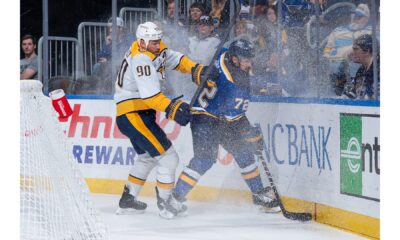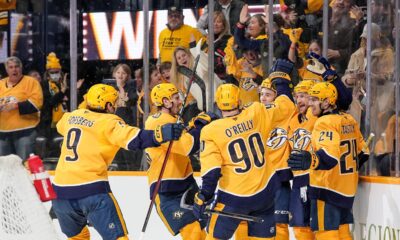
In trying to summarize why the Nashville Predators could not beat the Dallas Stars in Game One of the Western Conference Quarterfinal on Wednesday night, Head Coach Peter Laviolette boiled things down to a simple element of the game.
“They were quicker than us,” he said.

Most of the issues that plagued the Predators in the 3-2 loss to the Stars stemmed from a difference in pace, particularly in the second and third periods in which the Stars owned long stretches of possession. All three Stars goals were generated in some form from the blue line, and also came as a result of sustained zone pressure.

Even if the shooting defenseman didn’t score, the Stars infiltrated the crease area and were able to tuck home a big rebound off the stick of Mats Zuccarello for what would become the game-winning goal. Those types of goals will warrant some adjustments from the Predators’ defense.

“They’ve got some big forwards, they’ve got some guys up front,” defenseman Mattias Ekholm said. “We’ve got to make sure we tie them up and not have them in front of Peks so he can see the pucks. We have to take care of the house, take care of zone one, the closest area to Pekka so they don’t get the rebounds. They just fired pucks at the net and took care of the rebounds when they got some deflections. They did a good job and we need to be better.”

This heat map from Natural Stat Trick demonstrates how the Stars were able to generate offense thanks to sustained zone time. Their scoring chances were concentrated in two places: above the face-off circles and directly in front of the crease. That means the Stars’ defensemen were putting shots towards the goal, and when they didn’t get through, a forward got to the rebound and generated a secondary scoring opportunity.


The map does not include Dallas’ first goal off of a Miro Heiskanen shot on the power play, but that one also came from above the circles in the slot.

When those defensemen keep possessions alive at the blue line and continue to put pucks in dangerous areas, it can wear a defense down, particularly at the end of a long shift. The Predators got into desperate defending situations a few too many times in this loss.
“If you’re on the ice for 40 seconds, you’re gassed at that point and you’re hanging on,” said Laviolette on the Stars’ sustained possession. “You’ve just got to defend. If you’re fresh, there’s things that you can do. Some of that is just sustained zone time that came after we had been out there for 25-35 seconds and your tank is approaching empty. You’re just trying to defend middle ice and it ends up being longer than you want to be out there. Again, it probably just goes back to the same thing I started with: they were quicker.”
While this certainly was not a must-win game for the Predators, they now face a 1-0 series deficit in the first round of the Stanley Cup Playoffs for the first time since 2015 and more desperate situation in Game Two. Unlike the regular season, there are no more lethargic offensive teams to face.
The same Stars team will try to come out and do the same thing on Saturday night in Game Two, and the Predators will be tasked with finding a way to keep their defensive zone a bit more clear.
“Every team is going to be tough to defend in the playoffs,” defenseman P.K. Subban said. “Everybody’s competing and everybody wants a shot to win the Cup. You have to give them credit, they competed hard. The bounces that they got, they created. They worked really really hard. We’re just going to have to come out and work a little bit harder next time.”




















